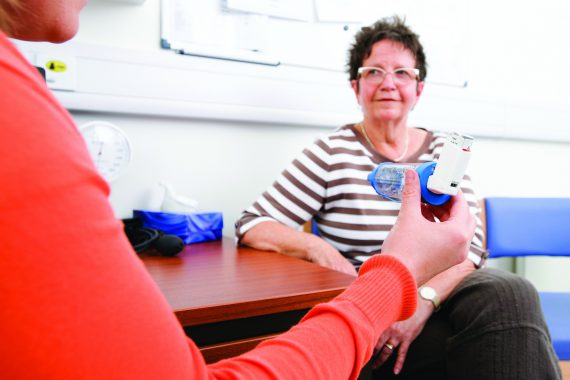Asthma UK admits its earlier shielding guidance ’caused confusion’

Guidance published by Asthma UK last month about criteria for shielding during the coronavirus (Coivd-19) outbreak ’caused confusion’, the charity has said.
It follows reports by GPs of dealing with anxious patients unclear about whether they were most clinically vulnerable from Covid-19 after the detailed information – which was contained in clinical charts – was published and later removed by the charity.
Pulse understands if the guidance had been followed millions of patients would have incorrectly shielded themselves by staying at home for 12 weeks.
Asthma UK, which has now taken down the information from its website, said it was following government advice at the time and published the guidance after speaking with an NHS England advisor.
NHS England said the shielding list is ‘constantly under review’ and that the healthcare service had worked to quickly identify and contact almost 1.3 million people on the list so far.
Asthma UK published information in March defining what was meant by ‘severe asthma’, which was one of the conditions laid out by the UK chief medical officers that should lead to patients shielding themselves from Covid-19.
It said patients who came under what was previously known as step four and five of the British Thoracic Society’s severe asthma guideline – and were also using high dose inhaled corticosteroids (ICSs) – should be shielding, and published BTS ICS potency charts on its website.
The charity said it published this information after speaking with NHS England’s national clinical director for respiratory, who agreed the definition was correct.
Asthma UK has since taken the guidance down after NICE published a definition of severe asthma in one of its rapid guidelines produced during the pandemic.
The charity said it has now switched to using NICE’s criteria for severe asthma and its accompanying potency tables, and advises healthcare professionals to do the same.
However it has not put NICE’s tables on its website because it found the previous BTS tables it published ‘caused confusion for our users who struggled to interpret them’.
GPs have told Pulse of the confusion among patients caused by different organisations releasing conflicting information about who should shield – and the resulting increase in workload for GPs.
Dr Lawrence Axten, a GP in Derbyshire, said: ‘Our GPs have been unclear on what the definition of shielding is for certain conditions with different bodies giving different information on what constituted a need for patients to shield. It has therefore taken up a great deal of clinical time.
‘GPs weren’t given the definition of what shielded meant – for example severe asthma can mean many things depending on which definition you are using.’
He added: ‘We had originally used the Asthma UK charts but then swapped to the new definition. This caused confusion not only with patients but with shielding staff who met the criteria for shielding. We had many calls from asthmatics wanting clarification. This increased workload and anxiety amongst our staff and patients.’
Emma Rubach, head of health advice at Asthma UK and the British Lung Foundation, said defining severe asthma was ‘extremely complex’.
She said: ‘Severe asthma is hard to classify and there are many people on medication compatible with severe asthma with no formal diagnosis of severe asthma. Data about respiratory is inconsistent and seemingly difficult to access, increasing stress on patients and clinicians.
‘In March we were told [by NHS England] people with severe asthma would be sent shielding letters, in line with the BTS guideline definition of severe asthma (formerly steps four and five).
‘After discussion with [NHS England’s] national clinical director for respiratory it was agreed that the criteria included BTS steps four and five but only where ICS dose was classed as high dose, excluding moderate dose. We updated our website and used the ICS potency charts from the BTS guideline.’
She added: ‘Following the recent publication of the NICE rapid guideline on severe asthma and Covid-19, and in line with the Government and NHS England, we switched to using the NICE criteria for severe asthma and the NICE potency tables.
‘While we use the potency tables to advise healthcare professionals if they contact us, we have refrained from publishing them on our site as we found the previous tables caused confusion for our users who struggled to interpret them.’
An NHS England spokesperson said: ‘The shielding list is constantly under review and the NHS has worked speedily to identify and contact more than 1.28m people to ensure they are being supported to stay at home and stay safe.’
Pulse July survey
Take our July 2025 survey to potentially win £1.000 worth of tokens

Visit Pulse Reference for details on 140 symptoms, including easily searchable symptoms and categories, offering you a free platform to check symptoms and receive potential diagnoses during consultations.











